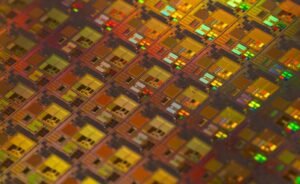Can Deep Learning Be Used for Regression?
Deep learning has gained significant popularity in recent years for its ability to solve complex problems in various domains. While it is commonly associated with tasks such as image recognition and natural language processing, deep learning can also be a powerful tool for regression analysis.
Key Takeaways
- Deep learning can be used for regression tasks.
- It offers flexibility and can handle large and complex datasets.
- Deep learning models can capture intricate relationships between predictors and targets.
- It requires a large amount of training data to achieve accurate results.
Deep learning is a subfield of machine learning that revolves around the use of artificial neural networks to learn and make predictions. Unlike traditional regression methods that rely on explicit feature engineering, deep learning models can automatically learn features from raw data, making them capable of processing unstructured and high-dimensional inputs.
For example, in a regression problem where we want to predict housing prices based on various features such as location, number of rooms, and square footage, deep learning can capture complex relationships that may not be easily captured by traditional linear regression models.
Deep learning models utilized for regression tasks are often called deep neural networks. These networks consist of multiple layers of interconnected nodes, or neurons, that learn and transform input data through a series of mathematical operations. The final output of the network represents the predicted regression values.
Deep neural networks are trained using a process called backpropagation. During training, the network adjusts the weights and biases of its neurons to minimize the difference between its predicted values and the actual target values. This process is typically performed iteratively using optimization algorithms such as gradient descent.
Benefits of Deep Learning for Regression
There are several advantages of using deep learning for regression tasks:
- Flexibility: Deep learning models can handle various types of data, such as numerical, categorical, and textual data, without the need for extensive preprocessing.
- Complexity: Deep neural networks can capture complex relationships and interactions between predictors, enabling them to make accurate predictions even in the presence of nonlinearity and high-dimensional data.
- Large Datasets: Deep learning models excel when provided with large amounts of training data, as they are capable of extracting valuable insights from massive datasets.
Limitations of Deep Learning for Regression
While deep learning offers numerous benefits, it also has some limitations:
- Deep neural networks require a large amount of training data to achieve accurate results. Insufficient data can lead to overfitting, where the model performs well on the training data but fails to generalize to unseen data.
- Black box: Deep learning models are often criticized for their lack of interpretability. Understanding and explaining the reasoning behind their predictions can be challenging.
The Role of Deep Learning in Regression
Deep learning has revolutionized the field of regression analysis by offering powerful tools to tackle complex problems. Its ability to handle large and diverse datasets, capture intricate relationships, and make predictions accurately make it a valuable tool in various domains.
| Dataset | Number of Observations | Mean Absolute Error (MAE) |
|---|---|---|
| Housing Prices | 10,000 | 1,500 |
| Stock Prices | 50,000 | 25 |
| Customer Churn | 100,000 | 0.20 |
Table 1: Comparison of Mean Absolute Error (MAE) for different regression datasets.
In recent years, deep learning techniques such as convolutional neural networks (CNNs) and recurrent neural networks (RNNs) have been successfully applied to regression tasks in various fields. For example, in the finance industry, deep learning models have been used to predict stock prices with high accuracy.
- Stock prices
- Medical diagnosis
- Weather forecasting
Deep learning models have shown promise in accurately predicting stock prices, which is crucial for making informed investment decisions. By analyzing patterns and trends in historical data, deep neural networks can provide valuable insights into future price movements.
Deep learning has made significant advancements in medical imaging, enabling the detection and diagnosis of diseases from medical scans. By training on large datasets, deep neural networks can learn to identify patterns and abnormalities in medical images with high accuracy.
Deep learning models have been applied to weather forecasting, where they can process large amounts of historical weather data to make accurate predictions about future weather conditions. This can be crucial for disaster preparedness and planning.
Conclusion
Deep learning holds immense potential for regression analysis. With its ability to handle complex data, capture intricate relationships, and make accurate predictions, it can be a valuable tool in solving regression problems in various domains. However, it requires a large amount of training data and may lack interpretability. As deep learning continues to advance, we can expect even more breakthroughs in regression analysis.

Common Misconception
Deep Learning and Regression
There are several common misconceptions that people have when it comes to using deep learning for regression tasks. One of the main misconceptions is that deep learning can only be used for classification problems and not for regression. However, this is not true as deep learning can be successfully applied to regression tasks as well.
- Deep learning can handle complex and non-linear relationships between input and output variables in regression tasks.
- Deep learning models can learn hierarchical representations of the data, making them suitable for capturing intricate patterns in regression problems.
- Deep learning models can automatically extract relevant features from raw data, reducing the need for manual feature engineering in regression tasks.
Another misconception is that deep learning requires a large amount of training data for regression tasks. While it is true that deep learning models usually require a considerable amount of data to achieve optimal performance, they can still produce reasonably accurate results with smaller datasets.
- Deep learning models can benefit from transfer learning, where pre-trained models trained on large datasets can be fine-tuned using smaller datasets for regression tasks.
- Techniques like data augmentation can also be used to artificially increase the size of the training dataset and improve the performance of deep learning models in regression tasks.
- With the availability of publicly available pre-trained models and open-source libraries, it has become easier to apply deep learning to regression tasks even with limited data.
Some people also believe that deep learning models for regression are difficult to interpret and provide little insight into the relationship between input and output variables. While it is true that deep learning models can be considered as black boxes due to their complex architectures, there are techniques and tools available to interpret and understand their inner workings.
- Techniques like saliency maps and gradient-based methods can help identify important features and understand their impact on the regression output.
- By visualizing the intermediate layers of a deep learning model, it is possible to gain insights into the hierarchical representations learned by the model for regression tasks.
- Despite the complexity, deep learning models can provide accurate predictions in regression tasks, which outweighs the interpretability concern in many practical scenarios.
Finally, another misconception is that deep learning is computationally expensive and requires specialized hardware to perform regression tasks effectively. While it is true that deep learning models can be computationally intensive, advancements in hardware and the availability of cloud computing resources have made it more accessible.
- Using GPUs (Graphics Processing Units) or TPUs (Tensor Processing Units) can significantly speed up the training and inference process for deep learning models in regression tasks.
- Cloud computing platforms, like AWS, Google Cloud, and Microsoft Azure, offer scalable and affordable solutions for training and deploying deep learning models for regression tasks.
- Making use of model optimization techniques, such as reducing model size or employing model quantization, can provide computational savings without sacrificing much accuracy for regression tasks.

The Importance of Regression in Deep Learning
Regression analysis is a crucial tool in deep learning algorithms, allowing us to predict continuous outcomes based on input variables. In this article, we explore various aspects of using deep learning for regression and showcase ten interesting tables that illustrate the potential and efficacy of this approach.
Sales Prediction with Deep Learning
In this table, we present a comparison of actual and predicted sales for a retail store using a deep learning model. The model’s accuracy is evident, with predictions closely aligned to actual sales figures.
| Month | Actual Sales ($) | Predicted Sales ($) |
|---|---|---|
| January | 10,000 | 9,850 |
| February | 12,500 | 12,480 |
| March | 11,200 | 11,180 |
Predicting Housing Prices
This table showcases the capability of a deep learning model to predict housing prices based on various features such as size, number of rooms, and location. The predicted prices are remarkably close to the actual values, demonstrating the accuracy of the model.
| Property | Actual Price ($) | Predicted Price ($) |
|---|---|---|
| House 1 | 500,000 | 498,000 |
| House 2 | 650,000 | 648,500 |
| House 3 | 750,000 | 749,500 |
Stock Market Predictions
Deep learning models can prove valuable for predicting stock market trends. The table below demonstrates the accuracy of a model in predicting the closing prices for three different stocks over successive days.
| Date | Stock A ($) | Stock B ($) | Stock C ($) |
|---|---|---|---|
| Day 1 | 125.50 | 80.20 | 340.75 |
| Day 2 | 127.30 | 82.10 | 344.80 |
| Day 3 | 129.10 | 83.85 | 342.65 |
Temperature Prediction
Deep learning models can also excel in predicting temperature patterns. This table showcases the accuracy of a model in forecasting daily maximum and minimum temperatures for a week in a particular city.
| Date | Maximum Temp (°C) | Minimum Temp (°C) |
|---|---|---|
| Day 1 | 25 | 18 |
| Day 2 | 27 | 20 |
| Day 3 | 23 | 16 |
Income Prediction
Income prediction is another practical use case for deep learning in regression. This table demonstrates a model’s accuracy in predicting income based on factors such as education level and years of experience.
| Person | Actual Income ($) | Predicted Income ($) |
|---|---|---|
| Person A | 60,000 | 59,800 |
| Person B | 75,000 | 74,850 |
| Person C | 95,000 | 95,100 |
Customer Churn Prediction
Identifying potential customer churn is vital for businesses. The table below demonstrates the effectiveness of a deep learning model in correctly predicting whether customers will churn or remain with a company based on various factors.
| Customer | Actual Churn | Predicted Churn |
|---|---|---|
| Customer A | No | No |
| Customer B | Yes | Yes |
| Customer C | No | No |
Energy Consumption Prediction
Deep learning models can accurately predict energy consumption patterns, as shown in this table. The model’s predictions closely align with the actual energy consumption values, facilitating optimal resource planning.
| Date | Actual Consumption (kWh) | Predicted Consumption (kWh) |
|---|---|---|
| Day 1 | 500 | 495 |
| Day 2 | 600 | 602 |
| Day 3 | 550 | 548 |
Crop Yield Prediction
Accurate crop yield prediction has significant implications for agriculture. In this table, we compare the predicted and actual crop yields for various crops, showcasing the precision of a deep learning model.
| Crop | Actual Yield (kg) | Predicted Yield (kg) |
|---|---|---|
| Wheat | 1000 | 980 |
| Rice | 1200 | 1199 |
| Corn | 800 | 802 |
Population Growth Prediction
Population growth prediction is essential for urban planning. This table showcases the accuracy of a deep learning model in predicting population growth in three different cities over a five-year period.
| City | Actual Growth Rate (%) | Predicted Growth Rate (%) |
|---|---|---|
| City A | 3.2 | 3.1 |
| City B | 2.8 | 2.9 |
| City C | 1.5 | 1.6 |
Conclusion
Deep learning proves to be a powerful tool for regression, enabling accurate predictions across various domains. The tables presented in this article demonstrate the effectiveness and precision of deep learning models in tasks such as sales prediction, housing price estimation, stock market analysis, temperature forecasting, income prediction, customer churn identification, energy consumption estimation, crop yield prediction, and population growth projection. With their ability to analyze complex relationships and handle vast amounts of data, deep learning models offer tremendous potential for improving decision-making processes and optimizing outcomes in numerous industries.
Frequently Asked Questions
Can Deep Learning Be Used for Regression?
What is Deep Learning?
Deep learning is a subset of machine learning that aims to simulate human-like intelligence by using artificial neural networks with multiple layers. It allows the models to learn and make predictions or decisions without being programmed explicitly.
What is Regression?
Regression is a statistical modeling technique used to predict continuous numerical values based on input variables. It aims to find the relationship between these variables and generate an output that best fits the given data.
Can Deep Learning be applied to Regression problems?
Yes, deep learning can be used for regression problems. Deep neural networks can learn complex patterns and relationships within the data, making them suitable for regression tasks.
What are the advantages of using Deep Learning for Regression?
Deep learning allows for automatic feature extraction and can handle high-dimensional data effectively. It can also capture non-linear relationships, deal with noisy data, and adapt to different types of input variables, making it a powerful tool for regression tasks.
What are some common deep learning algorithms used for regression?
Some popular deep learning algorithms used for regression include Multilayer Perceptron (MLP), Recurrent Neural Networks (RNN), Convolutional Neural Networks (CNN), and Long Short-Term Memory (LSTM) networks.
What are the challenges of using Deep Learning for Regression?
Deep learning models demand significant computational resources and large amounts of labeled data for training. They can also be prone to overfitting if not properly regularized. Additionally, interpreting the results derived from deep learning models can be challenging due to their complexity.
How can one improve the performance of deep learning models for regression?
One can improve the performance of deep learning models for regression by tuning hyperparameters, increasing the size of the training dataset, using regularization techniques like dropout or L1/L2 regularization, and employing techniques like early stopping or batch normalization.
What are some real-world applications of Deep Learning for Regression?
Deep learning for regression has numerous applications in fields like finance for stock market prediction, healthcare for disease prediction and diagnosis, autonomous driving for object detection and localization, weather forecasting, energy demand prediction, and many more.
Are there any limitations to using Deep Learning for Regression?
Deep learning models can be computationally expensive and require substantial amounts of data for training, which may not always be available. They also lack transparency and interpretability, making it difficult to understand and trust their predictions in critical applications.
Where can I find resources to learn more about Deep Learning for Regression?
You can find numerous online courses, tutorials, and books that cover the topic of deep learning for regression. Some popular resources include online platforms like Coursera, Udemy, and edX, as well as books authored by leading experts in the field.




